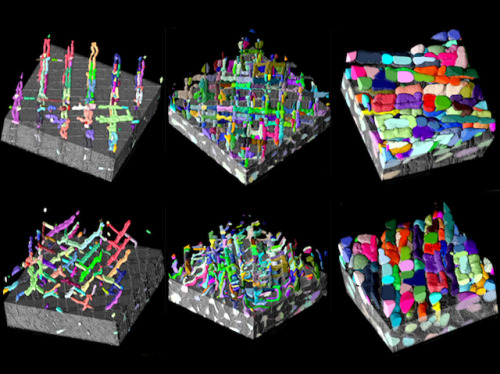
Pumping Muscle
Our muscles are thirsty for energy – each bend and flex requires a supply of cellular fuel, known as ATP. In these three sections of mouse muscle (shown from two different angles), bright colours highlight mitochondria – tiny biological ‘factories’ which pump out ATP. Yet patterns of mitochondria vary between different muscles. On the left, foot muscle produces ATP in short bursts, lacking the larger networks of mitochondria which help calf muscle (middle) maintain a slow, steady supply. Cardiac muscle from the mouse’s heart (right) has densely-packed, large mitochondria – adapted, perhaps, to direct a constant flow of ATP around this vital organ. Understanding these mitochondrial networks, a bit like mapping pylons and power stations supplying a city (although billions of times smaller), may help to predict and plan for a power cut – when mitochondrial disease or muscle injury threatens to rob human muscles of energy.
Written by John Ankers
- Image from work by Christopher K. E. Bleck and colleagues
- National Heart, Lung, and Blood Institute, National Institutes of Health, Bethesda, MD, USA
- Image originally published under a Creative Commons Attribution 4.0 International License
- Published in Nature Communications, November 2018
You can also follow BPoD on Instagram, Twitter and Facebook
Archive link






Комментариев нет:
Отправить комментарий